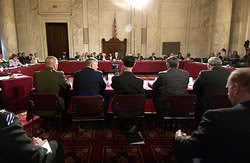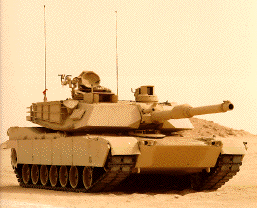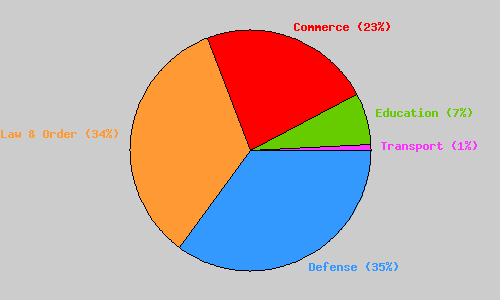The Italian Union

| |
| Flag of The Italian Union | |
| Motto: Motto for Sale | |
| [1] | |
| Region | Zurich |
|---|---|
| Capital | Central |
| Official Language(s) | English and Italian |
| Leader | Rylan Wall |
| Population | 1-2 billion |
| Currency | Zuro (Z$) |
| NS Sunset XML | |
Contents
Government
The Allied Federal States of the Italian Union (AFSIU)'s government is run in an American type of democracy, and is centered in the capital city of Central. It governs 73 states, 12 territories, and 2 economic districts.
Political Parties
These parties currently have representation in parliament
Corporate National Party (CN)
This is the party with the most seats in parliament, and is the party in power of the Executive Branch. The party represents the businesses of the Italian Union, so they focus on passing economic freedom laws and keep taxes low.
Economic Left/Right: 6.75 Social Libertarian/Authoritarian: 0.72
Liberty Party (L)
The Liberty Party was founded to protect the freedoms of the Italian Union citizens. As such they push for civil and political rights advocacy laws.
Economic Left/Right: 2.63 Social Libertarian/Authoritarian: -6.67
Moralistic Social Party (MS)
This party is backed by the majority religion (Roman Catholic) in the Italian Union, therefore they represent the church's values. The party doesn't take any sides on issues dealing with economics and political freedoms unless it somehow involves religion and values.
Economic Left/Right: -2.50 Social Libertarian/Authoritarian: 5.59
Communist Party of the Union (C)
The Communist Party is very liberal when it comes to the economy, making it a rival of the Corporate National Party.
Economic Left/Right: -8.88 Social Libertarian/Authoritarian: -0.10
Soviet Socialist Party (SS)
A leftist and authoritarian party wishing to turn the Italian Union into Soviet-like nation. Made up of radicals from Communist and Moralistic Social Parties.
Economic Left/Right: -9.00 Social Libertarian/Authoritarian: 5.74
Worker's Labor Party (WL)
A party recently created to help the "common laborer" against big business's "corrupt ways", but still keeping out of the publics personal lives.
Economic Left/Right: -8.13 Social Libertarian/Authoritarian: -7.44
Moderate Party (M)
A party made for the centrist and middle grounder of other parties. It has a wide range of views, and is expected to do well in the next election.
Economic Left/Right: 0.00 Social Libertarian/Authoritarian: 0.00
Liberal Christian Party (LC)
The Liberal Christian Party is a mainly made up of economic libertarians from the Moralistic Social Party. So it still has "moralistic" views.
Economic Left/Right: 6.13 Social Libertarian/Authoritarian: 7.59
Free Libertarian Party (FL)
This party firmly believes that government should just stay out everyones lives, and that is should be reduced to its smallest possible form.
Economic Left/Right: 7.13 Social Libertarian/Authoritarian: -6.92
Party Coalitions
Conservative Economic Coalition
Member Parties: Corporate National Party, Liberty Party, Free Libertarian Party, Liberal Christian Party.
Parliament Seats: 71
Opposition Alliance
Member Parties: Moralistic Social Party, Soviet Socialist Party, Communist Party, Worker's Labor Party.
Parliament Seats: 55
Legislative Branch
The Legislative Branch of the government deals with making and passing laws for the nation. It is headed by the Parliament which consists of Senators. These Senators are elected by the citizens of the Italian Union. There was one representing each state and none representing territories and economic districts, but now states, due to population, each have two Senators representing them. Elections for Senators are held every four years. Term limit is set at 3 terms. Parliament elections are decided by popular vote in the state.

Senator Party Breakdown
This shows how many seats are held by each Party.
- Corporate National Party: 29
- Liberty Party: 16
- Moralistic Social Party: 19
- Communist Party of the Union: 11
- Soviet Socialist Party: 8
- Worker's Labor Party: 17
- Moderate Party: 20
- Liberal Christian Party: 9
- Free Libertarian Party: 17
Executive Branch
The Executive Branch of the government heads up the military and dictates some domestic and foreign policy. Currently it is lead by Allied Chancellor Rylan Wall of the Corporate National Party. Elections are held for the Allied Chancellor every 7 years, and our decided on the Electoral College system. Term limit is set to unlimited terms.
Allied Intelligence Agency
The Allied Intelligence Agency (or AIA) is responsible for collecting foreign intelligence of interest to the Italian Union.
Internal Security Force
The Internal Security Force (or ISF) is responsible for protecting the Italian Union in case of foreign invasion (as first responders), act as the top law enforcement agency, and collect domestic intelligence about threats to the Italian Union.
Judicial Branch
The Judicial Branch of the government is the court system of the country where laws are interpreted and sentencing for breaking these laws is carried out. It is headed up by the Allied Supreme Court. The Allied Supreme Court consists of seven judges, and the judges go up for election every 10 years. All the citizens of the Italian Union vote one vote for a judge candidate and the seven most popular judges make up the Allied Supreme Court. Term limit is set to unlimited terms.
Military
The military is commanded by the Executive Branch, therefore is lead by the Allied Chancellor. The Italian Union's military is also a member in the Zurich Armed Services meaning that the Allied Chancellor reports to Zurich Military High Command. There is no draft currently in effect, though the government reserves the right to reinstate one. All military equipment is American designed, and manufactured in the Italian Union. The military is rather simple in designs, manufacturing only a few types of each vehicle/aircraft/etc. But the Italian Union manufactures a lot of each of those types.

Branches
There are three branches in the military.
Army
The Italian Union's army is lead by General John Jackson. The army is in charge of ground based military operations, and is responsible to patrol land border crossings. It consists of infantry, tanks, infantry vehicles, and other support ground units.
Infantry Vehicles:
- AAVP7A1 Amphibious Personnel
- Bradley Fighting Vehicle M-2
- LAV-AT Wheeled Anti-Tank
- M113 Armored Personnel Carrier
Tanks
- M1 Abrams Tank
- M1A2 Tank
Other Vehicles
- HMMWV High Mobility M/P Wheeled
- M93A1 - NBC Reconaissance
- LAV-R Wheeled Recovery

The Italian Union's navy is lead by Admiral Ray Rome. It is in charge of sea military operations, and is responsible to guard territorial waters. It consists of patrol craft, transport/landing ships, aircraft carries, submarines, and other combatant ships.
Patrol Craft
- Cyclone Class Coastal Patrol Boats
- YP Yard Patrol Craft
Transport/Landing Boats
- LST - Newport Class Tank Landing Ships
- Landing Craft, Air Cushion (LCAC)
- Landing Craft, Mechanized and Utility (LCM/LCU)
- AOE - Combat Supply Ships
Aircraft Carries
- CVN68 - Nimitz Class Aircraft Carrier
- CVN65 - Enterprise Class Aircraft Carrier
Submarines
- SSN21 - Seawolf Class Attack Submarine
- SSN688 - Los Angeles Class Fast Attack Submarine
- SSBN726 - Ohio Class Fleet Ballistic Missile Submarine
- SSBN - Fleet Ballistic Missile Submarines
Other Combatant Ships
- BB61 - Iowa Class Battleship
- FFG7 - Oliver Hazard Perry Class Guided Missile Frigate
- DD963 - Spruance Class Destroyer
- LHA - Tarawa Class Amphibious Assault Ship

Airforce
The Italian Union's Airforce is lead by Air Chief Marshal Rebecca Williams. The Airforce is in charge of air military operations, and is also responsible for guarding the Italian Union's airspace. It consists of cargo planes, recon craft, helicopters, strategic bombers, and tactical aircraft.
Cargo Planes
- C-130 Hercules
- C-9 Skytrain
- C-141B Starlifter
Recon Craft
- SR-71 Blackbird
- U-2S
Helicopters
- AH-1W Super Cobra
- MH-53J Pave Low IIIE
- MH-6 'Little Bird'
Strategic Bombers
- B-2 Spirit
- B-52 Stratofortress
- P-3C Orion
Tactical Aircraft
- F-22 Raptor
- AV-8B Harrier II
- F-15E Strike Eagle
- F/A-18 E/F Super Hornet

Missiles
The Italian Union has a robust non-nuclear missile system that allows missiles to be launched from ground, air, or sea.
- Preferred Ground to Ground Missile: MLRS Guided
- Preferred Ground to Air Missile: MIM-104 Patriot
- Preferred Air to Ground Missile: AGM-65 Maverick
- Preferred Air to Air Missile: AIM-7 Sparrow
- Preferred Air to Ship Missile: AGM-84 Harpoon
- Preferred Ship to Ground Missile: BGM-109 Tomahawk
- Preferred Ship to Air Missile: RIM-7 Sea Sparrow
- Preferred Ship to Ship Missile: AGM-84 Harpoon
- Preferred Ship to Submarine Missile: RUM-139 VL ASROC
- Preferred Submarine to Ground Missile: BGM-109 Tomahawk
- Preferred Submarine to Ship Missile: MGM-52 Sea Lance
- Preferred Submarine to Submarine Missile: UUM-44 SUBROC

Nuclear Weapons
Just recently the Italian Union started its nuclear weapons program and only currently has the Trident I UGM-93A nuclear missile that launches from a ballistic missile submarine.
Missile Defense Program
Unlike the Italian Union's nuclear program, its anti-missile program is very developed. The program uses both ground and space sensors to detect incoming missiles, and then uses either the Patriot Missile System, Airborn Lasers, or Ground Based Interceptors to intercept the missile depending on the situation.
Economy
The Italian Union's economy is considered to be free market with the government controlling no resources themselves, but it does tax imports and exports. The government also taxes the income of its citizens.
Economic Facts
- Income Tax Rate: 0-15%
- Government Priority: Law and Order
- Major Industries: Information Technology, Gambling, and Retail
- Gross Domestic Product: Z$10-30 trillion
- GDP per Capita: Z$20-50 thousand
- Unemployment Rate: 0-10%
- Natural Resources: Petroleum, Steel, Minerals, Gold, Iron
- Biggest Imports: Uranium, Manufactured Goods, Food, Wood
- Biggest Exports: Services, Information Technology
- Biggest Trade Partners: Eyster, The MCC Federation, Aetheronian Republics , SwissPeace, Slices Right, Skjolden, Armeania
- Major Corporations: Deplin Arms Incorporated, 4-Star Oil
Approximate Government Spending

Alliances
Since the Italian Union is a member of the region Zurich every native in Zurich is automatically an ally. Also all the alliance treaties that Zurich has with other regions makes the Italian Union allies with every native nation in those regions.
History
These are some historical events that have happened in the Italian Union (Currently only includes recent history).
Civil War
7/26/06 to 8/20/06
The states Basilio, Melania, Patrizio, and North Rufino declared independence from the Italian Union. Those states are represented by the four Communist Party Senators, so it is believed they want to separate because they are minority in the political process. Then the Separatism Act, proposed by Senator Ron Rhineman (MS), was voted on and passed 65 to 4 in parliament (only 69 votes because of the 4 separatist Senators). The bill summed up states that any separation will not be tolerated and will be stopped by force if necessary. Allied Chancellor Wall approved this bill, officially making it a law. The Independent States of the Italian Union (ISIU), what the separatist states are calling their new government, failed to comply with the Separatism Act, so the Allied Federal States of the Italian Union declared war on The Independent States of the Italian Union. Military air strikes immediately started pounding into the ISIU which prompted them to strike back with artillery fire. This exchange went on for seven days before a huge ground force was sent into the rebel states to bring them back under control. It took three months of intense fighting before the Independent States surrendered to the Allied Federal States with causalities in the tens of thousands on both sides. The rebel states have gotten full states rights back, and held emergency elections to elect new representatives (governors, senators, etc.). The Communist Party still ended up remaining in power in those states.
Arms Exportation Rights Act Passed into Law
8/27/06
Bill 132, commonly known as the Arms Exportation Rights Act, was passed into law by a vote of 57 to 16 by parliament and a signature from Allied Chancellor Wall. It allows private companies to sell military arms to foreign governments and organizations. This bill was believed to be heavily lobbied by the arms manufacturing industry in order to increase the number of buyers to raise profits. It is a highly controversial bill due to the fact that some citizens believe that the corporations can't be trusted to sell to safe and reliable organizations. The nation should see a stronger economy because of this new law.
The Italian Libertà War
| The Italian Libertà Summary | |
|---|---|
| Date: | September 9, 2006 to Present |
| Locations: | Molta Autorità |
| Outcome: | Still in Progress |
| Deaths (approx.) | |
| Military: | So far 7,000 |
| Civilian: | So far 28,000 |
| Total: | So far 35,000 |
| Main Participants | |
| The Free Italian Republics | Northeastern Alliance |
| The Italian Union Molta Autoritá Rebels Nomem Rebels East Paese Rebels Dichiara Rebels Lanczva Rebels Stasts Rebels |
Molta Autorità Nomem East Paese Controlla Dichiara Lanczva Stasts |
9/4/06 to Present
After a rebellion in the neighboring country of Molta Autorità, the Allied Chancellor announced war against the current government and sided with the rebels. First the military destroyed Molta Autorità border military with missile and artillery attacks. After these strikes the Italian's Union Army and Airforce quickly took the capital in a coalition fight with the rebels against the Molta Autorità's military, and declared victory over their government. Unfortunatly other authoritarian states in the area saw the Italian Union's involvement in the rebellion was seen as a direct threat to their governments. So the nations of Stasts, Nomem, East Paese, Controlla Dichiara, Lanczva, and along with Molta Autoritá formed the Northeastern Alliance. Because of this interpreted hostile action, the Italian Union made allies with several rebel organizations inside all of these countries. Through several months there was intense fighting in Molta Autorità. The balance of power constantly shifted between the two sides. That was until finally after a final coalition raid between the rebels and the Italian Union the Molta Autorità's authoritarian government forces were defeated in the Battle of Three Roads. But the war was far from over since the Italian Union had promised the rebels of all the nations from the Northeastern Alliance that it would liberate their people. Unfortunately for the Italian Union's military this was easier said than done. The other nations still had a considerable military left even after their defeat in Molta Autorità.
Elections
10/1/06 to 10/13/06
Parliament elections are held, for 2006, through part of October. The election news polls at the beginning of the process looked good for the minor parties who are included on the ballet for the 2006 election. This election puts up two senators for each state, for the first time, to cope with rapid population growth. Coalitions are also formed to try and end up with power in parliament. Results are above in the Government section.
